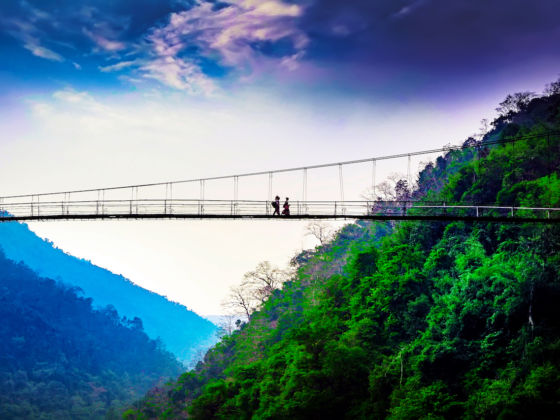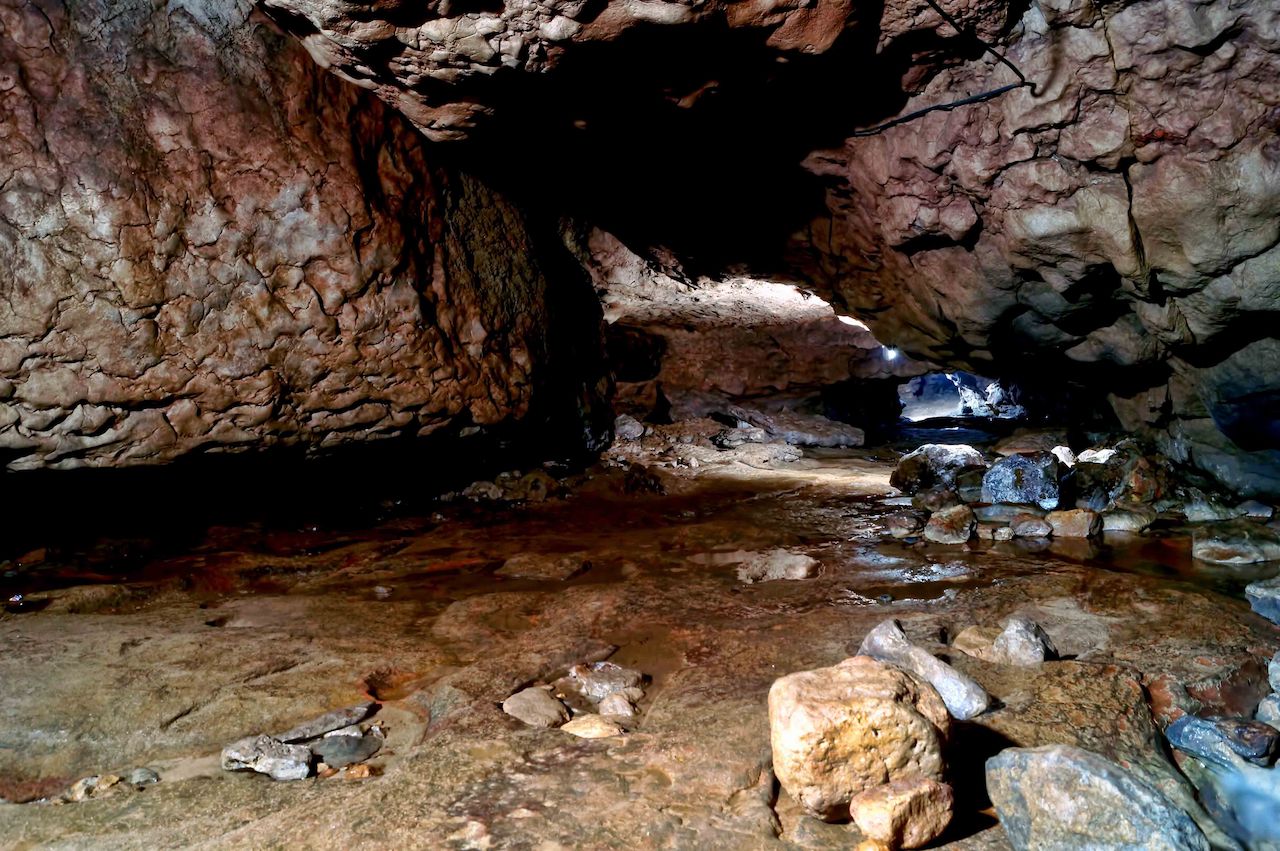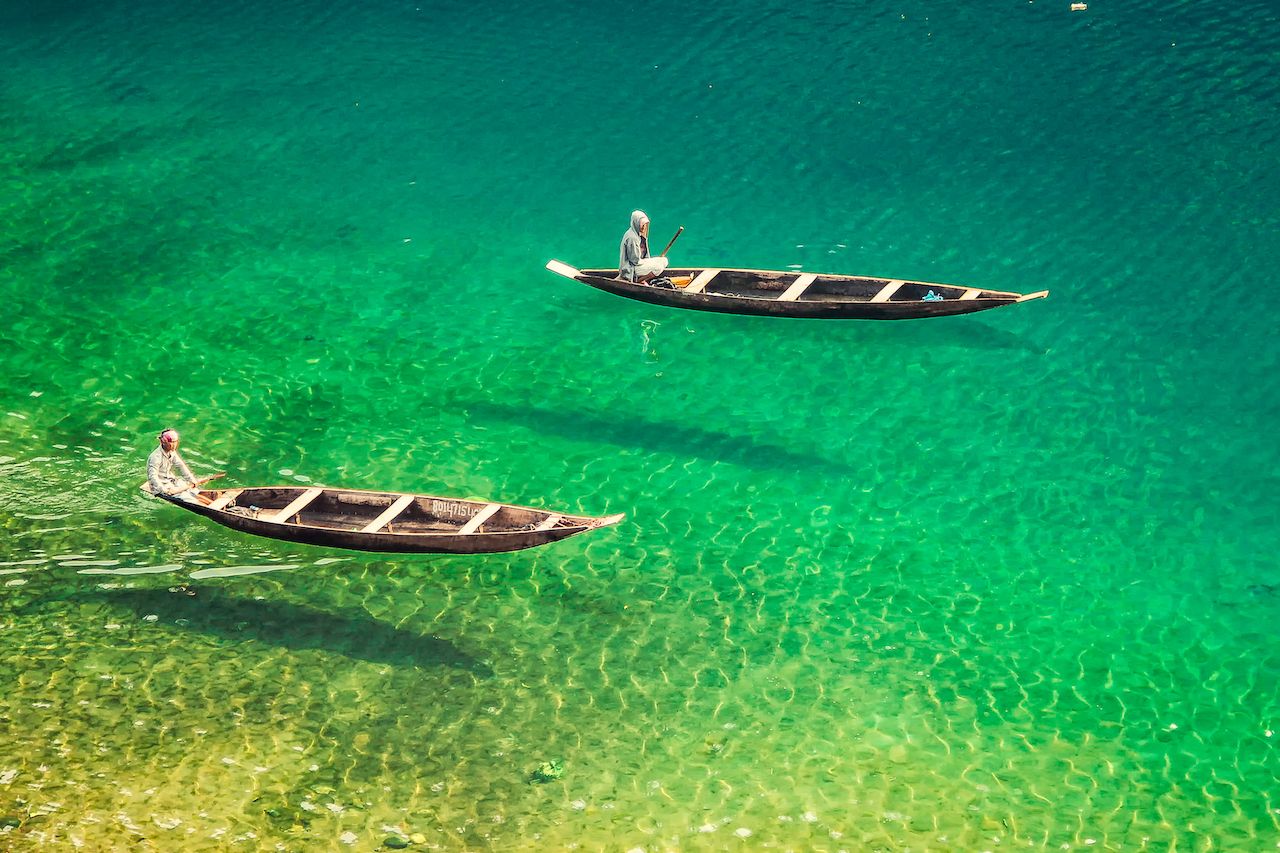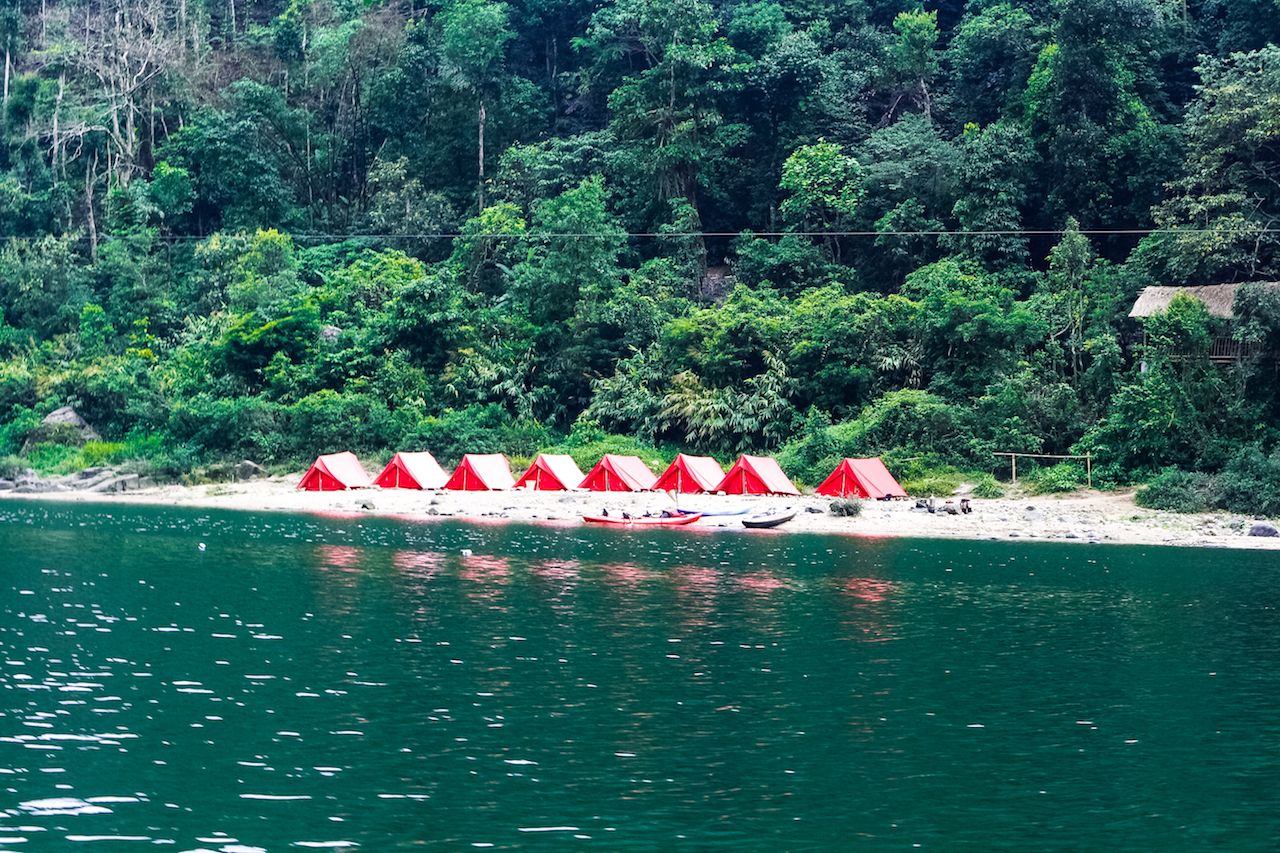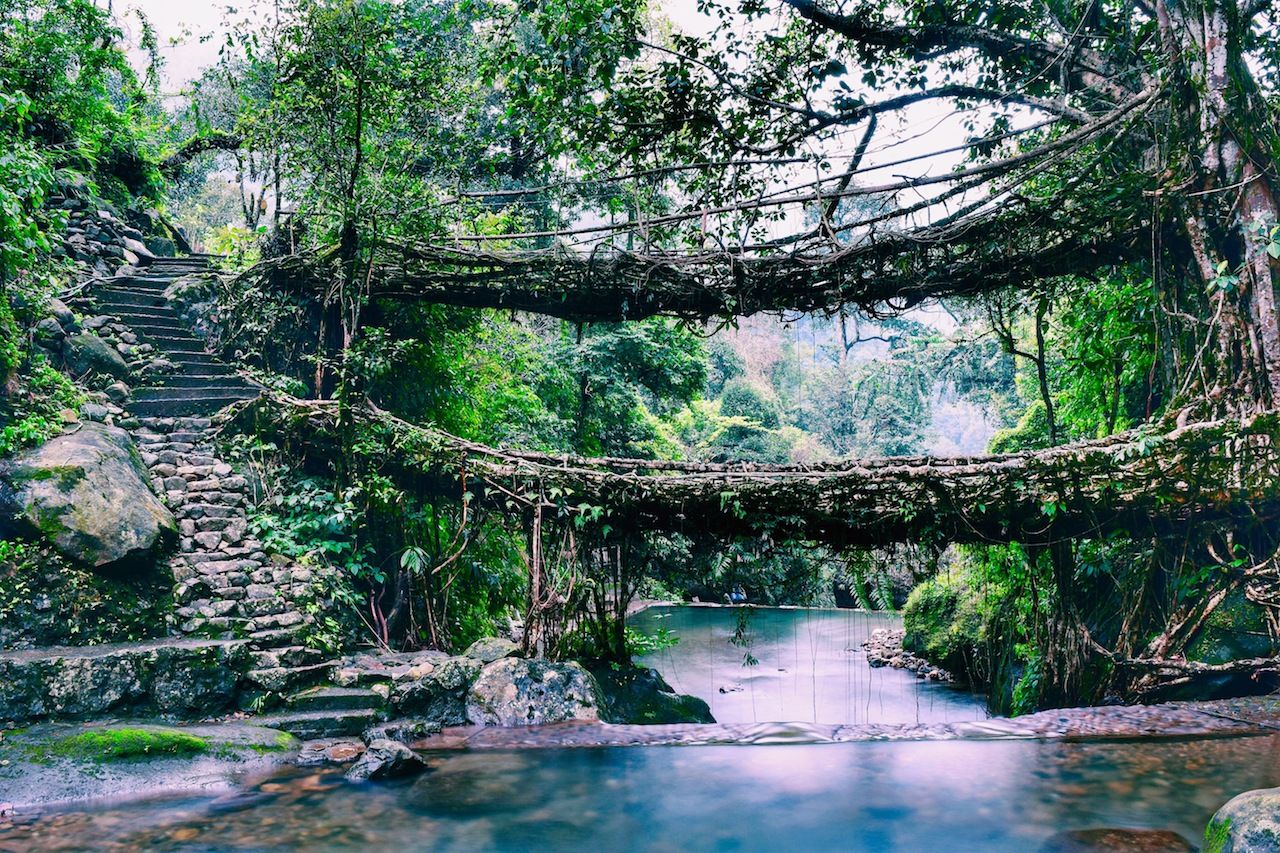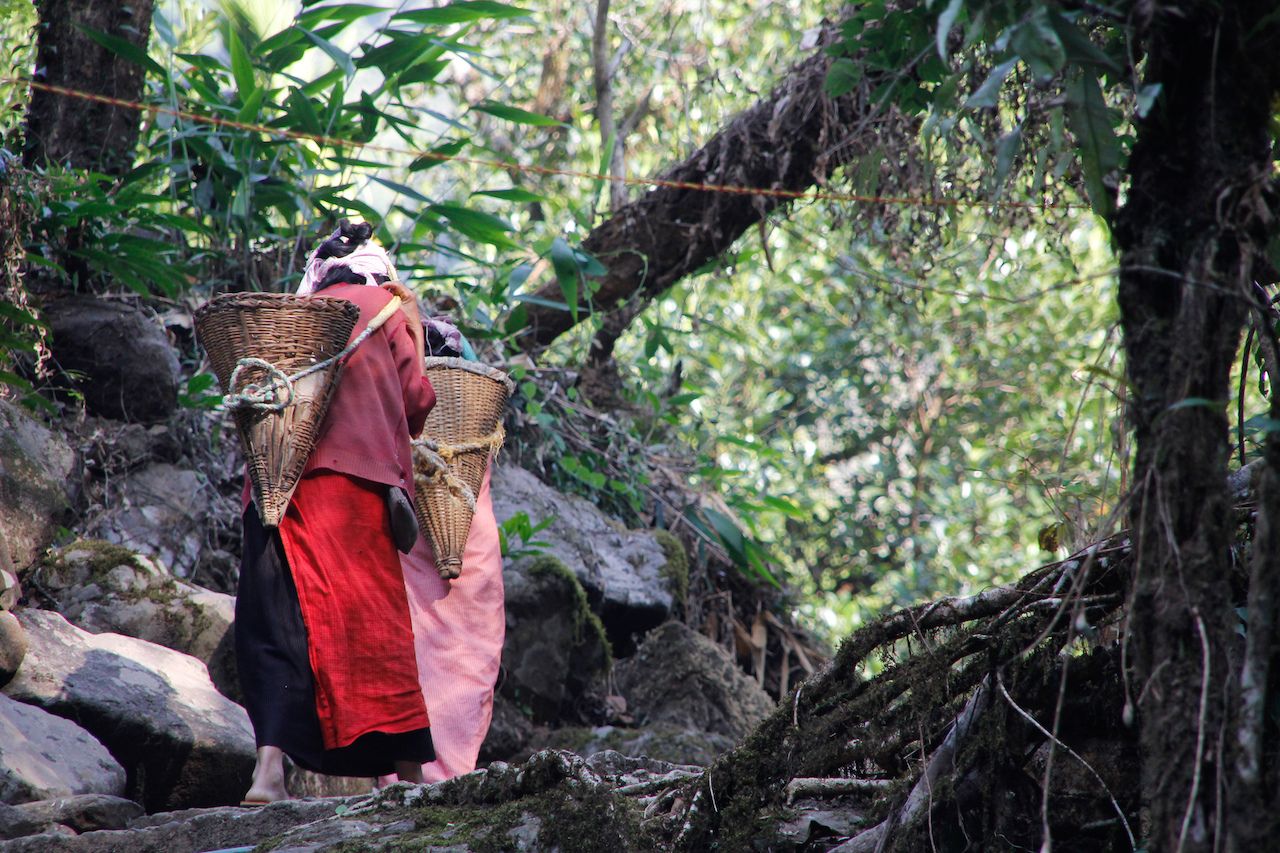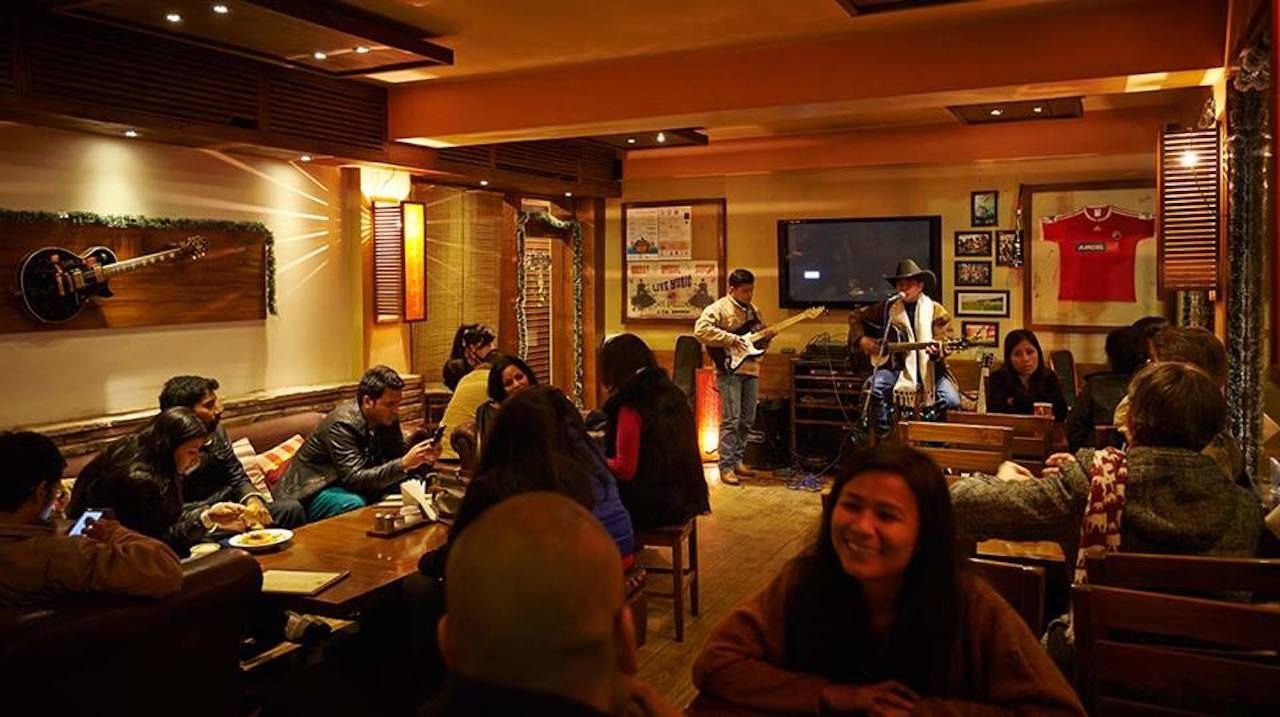If you look at a map of India, you’ll see a small sliver of land connecting the subcontinent to a part of India that’s almost totally surrounded by neighboring countries like Bhutan and Myanmar. This encircled portion of India stretches from the Himalayas to the mountainous jungles neighboring Bangladesh. It’s there, amid those lush mountain forests, that you’ll find Meghalaya.
Meghalaya, which means “Abode of Clouds” in Sanskrit, has sheltering mountains, living root bridges, crystal-clear rivers, and endless caves. It’s also extremely safe for female travelers. Slowly opening up to tourism, the tiny state of Meghalaya should be on every outdoor lover’s bucket list. Here’s why.
